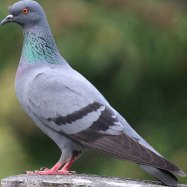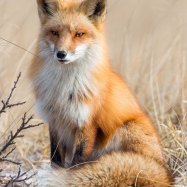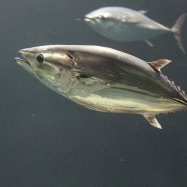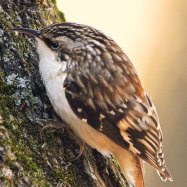
Leopard Frog
2 to 4 inches (5 to 10 centimeters)
Meet the leopard frog, a slender beauty found in eastern and central North America. With a length of 2 to 4 inches, these frogs are admired for their stunning green and brown spotted bodies. The long legs of the leopard frog make them excellent jumpers, able to cover long distances in a single leap. Keep an eye out for these fascinating creatures on your next walk through a marsh or pond. #LeopardFrog #Ranidae #NorthAmerica #Wildlife
Animal Details Summary:
Common Name: Leopard Frog
Kingdom: Animalia
Habitat: Freshwater wetlands, ponds, lakes, marshes, and slow-moving streams
The Enigmatic Leopard Frog: A Master of Adaptability and Camouflage
If you've ever taken a stroll in the lush wetlands of North America, chances are you may have come across a whimsical frog with mesmerizing spots. This small yet fascinating creature is none other than the Leopard Frog. Also known as Lithobates pipiens, this amphibian's unique characteristics and behaviors have captivated the attention of biologists, nature enthusiasts, and even poets.From its exceptional camouflage abilities to its intriguing feeding methods, the Leopard Frog has earned its place as a mysterious yet charismatic member of the animal kingdom Leopard Frog. Let's dive into the fascinating world of this captivating creature and discover the secrets that make it stand out among its amphibian peers.
The Journey of the Leopard Frog: Distribution and Habitat
As its common name suggests, the Leopard Frog is native to North America, specifically the United States and Canada. However, this versatile creature can be found in Eastern and central parts of North America, making its way through a diverse range of habitats.One of the most prominent habitats of the Leopard Frog is freshwater wetlands. These include ponds, lakes, marshes, and slow-moving streams, where the frog's behavior and characteristics have fully adapted to its surroundings. In these habitats, the Leopard Frog can be found basking on rocks or floating on water lilies, using its remarkable camouflage to blend in with its surroundings and evade predators.
Physical Characteristics and Adaptations
The Leopard Frog, like most amphibians, has a unique body structure to suit its diverse living environment. Its slender body and long legs make it an agile swimmer, allowing it to swiftly move through the water and land. These long legs also aid in hopping and leaping, making it easier for the frog to hunt for food and escape danger Lancashire Heeler.One of the most distinctive features of the Leopard Frog is its coloration. As the name suggests, this frog's most defining characteristic is its green or brown skin, speckled with dark spots resembling a leopard's coat. This cryptic color pattern has enabled the frog to blend in with its surroundings, making it almost invisible to predators.
But the Leopard Frog's camouflage skills go beyond its coloration. The frog has an ability to change its skin color depending on its environment, allowing it to adjust to different lighting conditions. This remarkable adaptation has helped the Leopard Frog survive in various habitats, making it a true master of disguise.
While its camouflage serves as a crucial defense mechanism, the Leopard Frog also has other adaptations to help it thrive in its environment. It has webbed feet, which aid in swimming, and special glands on its skin that produce mucus to keep its skin moist and protect it from harmful bacteria.
A Carnivorous Hunter: Feeding Habits of the Leopard Frog
The Leopard Frog is a carnivore, and its diet typically consists of insects, spiders, worms, and small fish. The frog uses its sharp eyesight and long, sticky tongue to capture prey in a split second. Its large round eyes, positioned on top of its head, allow it to have a wide field of vision, making it an effective hunter.Similar to other amphibians, the Leopard Frog has a unique feeding method known as "gape-limited" feeding. This means that the frog can only open its mouth to a certain extent, making it impossible for it to consume prey that is larger than its head. To compensate for this, the frog has a remarkable ability to expand its jaw and throat while swallowing prey, making it seem like it's devouring prey much larger than itself.
This feeding strategy has allowed the Leopard Frog to thrive on a diverse diet and adapt to different environments. It can switch from being an insect-eater to a fish-eater, depending on its habitat and food availability.
The Mating Rituals of the Leopard Frog
Like most frogs, the Leopard Frog's breeding season begins in the early spring. During this time, the males produce a series of deep croaking sounds to attract females. The larger and louder the calls, the more likely they are to attract a mate.Once a female has been lured in, the male will grasp onto her back through a process called amplexus. The female will then lay her eggs in the water, and the male will fertilize them externally. The eggs typically hatch into tadpoles within two weeks and undergo a metamorphosis process until they reach adulthood.
However, the reproductive habits of the Leopard Frog have been heavily affected by human activity. Habitat destruction and pollution have led to a decrease in the frog's population, making it a species of conservation concern.
Threats and Conservation Efforts
Despite its impressive adaptations and survival skills, the Leopard Frog faces a range of threats in the wild, mainly due to human activities. Habitat destruction and pollution of waterways have significantly impacted the frog's population. Pesticides and herbicides used in agriculture have also been known to harm these creatures, making it challenging for them to reproduce and survive.Efforts are being made to conserve the Leopard Frog, including protecting its habitats, reducing pollution, and raising awareness about their importance in the ecosystem. Some organizations have also established breeding programs to help boost the frog's population and release them into the wild.
In Conclusion
The Leopard Frog's unique characteristics, behaviors, and adaptations have earned it a place of admiration and curiosity among humans. Despite facing various threats, this versatile and resilient creature continues to thrive in its diverse habitats, reminding us of the importance of conserving our natural world.From its remarkable camouflage to its unusual feeding methods, the Leopard Frog is a true marvel of nature that continues to fascinate and intrigue us. Let us hope that through our efforts, we can ensure the survival of this enigmatic and charismatic creature for generations to come.

Leopard Frog
Animal Details Leopard Frog - Scientific Name: Lithobates pipiens
- Category: Animals L
- Scientific Name: Lithobates pipiens
- Common Name: Leopard Frog
- Kingdom: Animalia
- Phylum: Chordata
- Class: Amphibia
- Order: Anura
- Family: Ranidae
- Habitat: Freshwater wetlands, ponds, lakes, marshes, and slow-moving streams
- Feeding Method: Carnivorous
- Geographical Distribution: North America
- Country of Origin: United States and Canada
- Location: Eastern and central North America
- Animal Coloration: Green or brown with dark spots
- Body Shape: Slender body with long legs
- Length: 2 to 4 inches (5 to 10 centimeters)
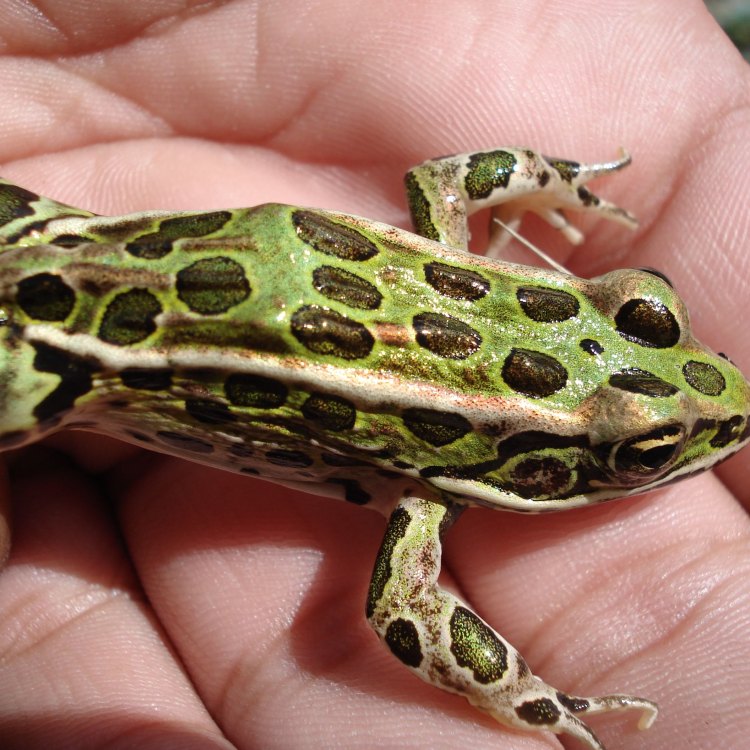
Leopard Frog
- Adult Size: 2 to 4 inches (5 to 10 centimeters)
- Average Lifespan: 3 to 5 years
- Reproduction: Sexual
- Reproductive Behavior: Males attract females with calls and perform courtship rituals
- Sound or Call: Loud, snoring-like call
- Migration Pattern: Non-migratory
- Social Groups: Solitary
- Behavior: Active during day (diurnal), good swimmers
- Threats: Habitat loss, pollution, climate change
- Conservation Status: Least Concern
- Impact on Ecosystem: Prey for various predators, plays role as a predator and prey in the ecosystem
- Human Use: Commonly used in scientific research and as pets
- Distinctive Features: Spotted pattern on body
- Interesting Facts: Can jump up to 3 feet in distance
- Predator: Birds, snakes, fish, turtles, and other larger frogs
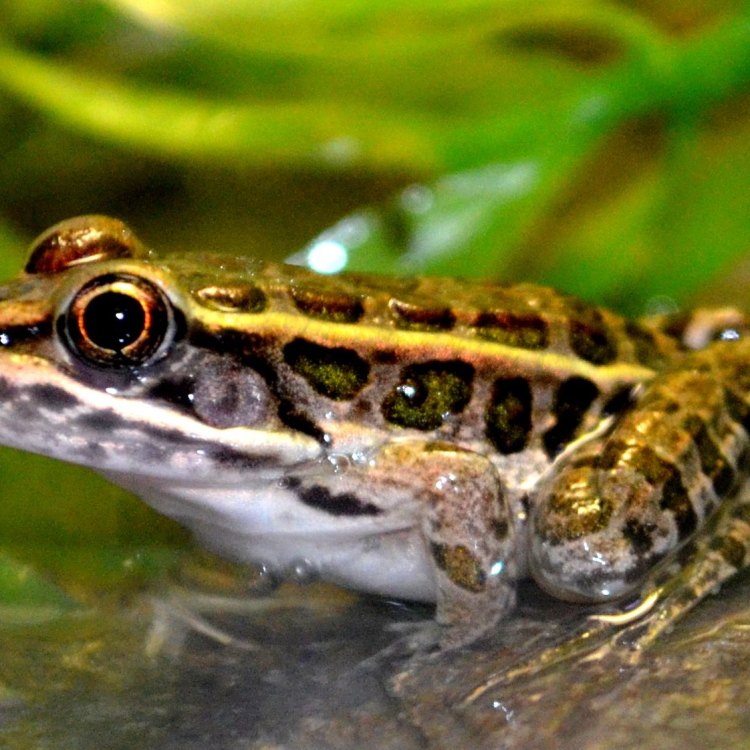
Lithobates pipiens
The Colorful and Energetic World of Leopard Frogs
When you picture a frog, you may think of a green or brown creature that hops around near water bodies. But there is one type of frog that stands out from the rest with its unique spotted pattern and energetic nature - The Leopard Frog.Leopard frogs, also known as Rana pipiens, are a species of frog that can be found throughout North America. From Canada all the way down to Mexico, these fascinating amphibians have captured the attention of nature enthusiasts and scientists alike PeaceOfAnimals.Com.
But what makes the Leopard Frog so special? Let's dive deeper into the world of this colorful creature and uncover some interesting facts about its behavior, threats, and role in the ecosystem.
A Unique Appearance
One of the first things that will catch your eye about the Leopard Frog is its distinctive spotted pattern on its body. These spots can vary in size, shape, and color, making each frog unique in its own way. Some may have dark spots on a light background, while others may have light spots on a dark background.The size of these frogs also adds to their unique appearance, with adults reaching a size of 2 to 4 inches (5 to 10 centimeters). This may not seem very big compared to other animals, but for a frog, it's quite impressive. Their average lifespan is 3-5 years, and during that time, they undergo several physical changes.
The Life of a Leopard Frog
Like most frogs, Leopard Frogs begin their life cycle as tadpoles in the water. They hatch from eggs laid in shallow water bodies, such as ponds, lakes, or wetlands Lapponian Herder. These tadpoles feed on algae, plants, and small invertebrates until they undergo metamorphosis and become adult frogs.As adults, they are sexually reproductive creatures that typically breed in the spring. The males attract females by making loud, snoring-like calls that can be heard from a considerable distance. Once the females arrive, the males will perform courtship rituals to win their potential mate's favor.
Once a female chooses a male, they will lay eggs in the water, which will hatch into tadpoles again, continuing the cycle.
Active and Social Creatures
Leopard Frogs are diurnal creatures, meaning they are most active during the day. They are also excellent swimmers, thanks to their powerful leg muscles and webbed feet. You may often spot them sitting on lily pads, waiting to catch their next meal.While they are solitary creatures, they may interact with each other during the breeding season or while competing for food. However, once the breeding season is over, they will return to their solitary behavior.
Threats and Conservation Status
Like many other species, Leopard Frogs face numerous threats that put their population at risk. Habitat loss due to development and pollution has greatly affected their numbers. Climate change, with its unpredictable weather patterns, has also impacted their breeding and migration patterns.Despite these threats, the International Union for the Conservation of Nature (IUCN) has listed them as "Least Concern" on its Red List of Threatened Species. One reason for this is their widespread distribution and adaptability to different habitats.
A Crucial Role in the Ecosystem
Leopard Frogs may be small, but they play a crucial role in their ecosystem. As tadpoles, they feed on algae and plants, contributing to the nutrient cycle in the water. As adults, they become prey to various predators, such as birds, snakes, fish, turtles, and other larger frogs. At the same time, they also play a role as predators, feeding on insects and small invertebrates, helping to keep their populations in check.Leopard Frogs also have an impact on human activities. They are commonly used in scientific research, especially in the study of amphibians and their habitats. They are also popular as pets, with their vibrant colors and active nature making them a favorite among frog enthusiasts.
Interesting Facts about Leopard Frogs
Apart from their distinctive appearance and important role in the ecosystem, there are a few interesting facts about Leopard Frogs that may surprise you:- While they may seem like slow-moving creatures, Leopard Frogs are actually capable of jumping up to 3 feet in distance! This makes them one of the longest jumping frogs in the world.
- They are non-migratory, meaning they do not undertake long-distance journeys like some other species of frogs. They prefer to stay in a small area with access to water bodies.
- Leopard Frogs have a unique defense mechanism where they puff themselves up to appear larger in size when threatened. This is often accompanied by a loud, harsh call to scare off predators.
- Despite their name, not all Leopard Frogs have leopard-like spots. In some areas, they may have plain, solid-colored skin, making them difficult to spot among vegetation.
- These frogs are quite adaptable and have been found in urban and suburban areas, making use of artificial water bodies such as swimming pools and ponds.
In Conclusion
Leopard Frogs may seem like just another small frog to the untrained eye, but upon closer inspection, you'll discover a colorful world full of interesting behaviors and ecological significance.From their unique spotted patterns to their loud calls and energetic nature, there is no doubt that these frogs are a fascinating addition to the diverse range of amphibian species in North America. However, their populations continue to face threats, and it is essential to raise awareness and take steps to conserve and protect these creatures for future generations to enjoy.
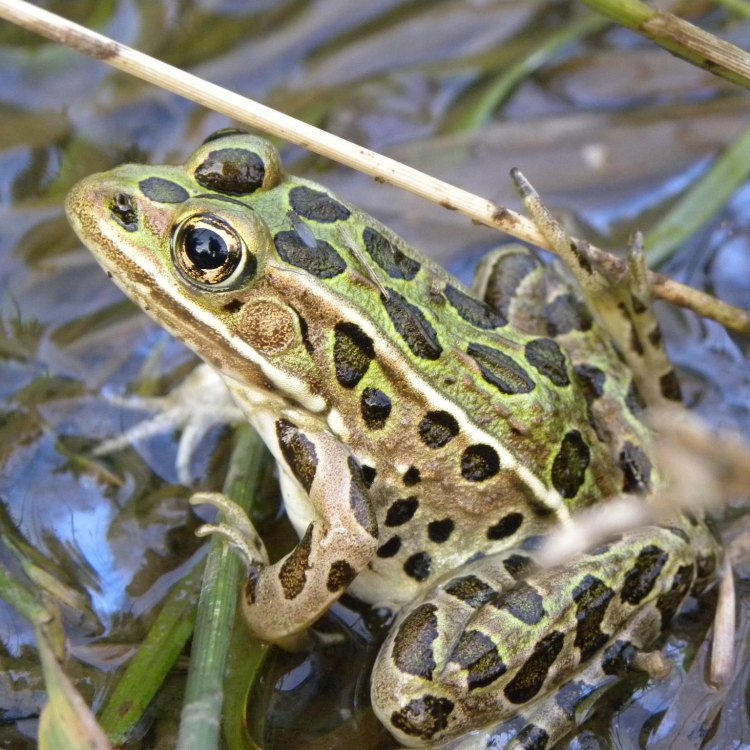
The Enigmatic Leopard Frog: A Master of Adaptability and Camouflage
Disclaimer: The content provided is for informational purposes only. We cannot guarantee the accuracy of the information on this page 100%. All information provided here may change without prior notice.

